South Dakota, located in the Midwestern region of the United States, is a state known for its stunning natural beauty, rich history, and vibrant culture. With its expansive prairies, towering mountains, and charming small towns, South Dakota offers a rewarding blend of outdoor adventure and cultural experiences. To help visitors and residents navigate this beautiful state, we have created a detailed map of South Dakota with cities and highways.
This map highlights South Dakota’s major cities, including Sioux Falls, Rapid City, Pierre, and Mitchell, as well as its primary highways and roads. Whether you’re planning a road trip or simply want to explore South Dakota’s unique landscape and culture, this map is an essential tool. So, grab your map and get ready to discover all that South Dakota has to offer, from its world-renowned national parks to its delightful small towns and everything in between.
Printable South Dakota Map With Cities and Highways
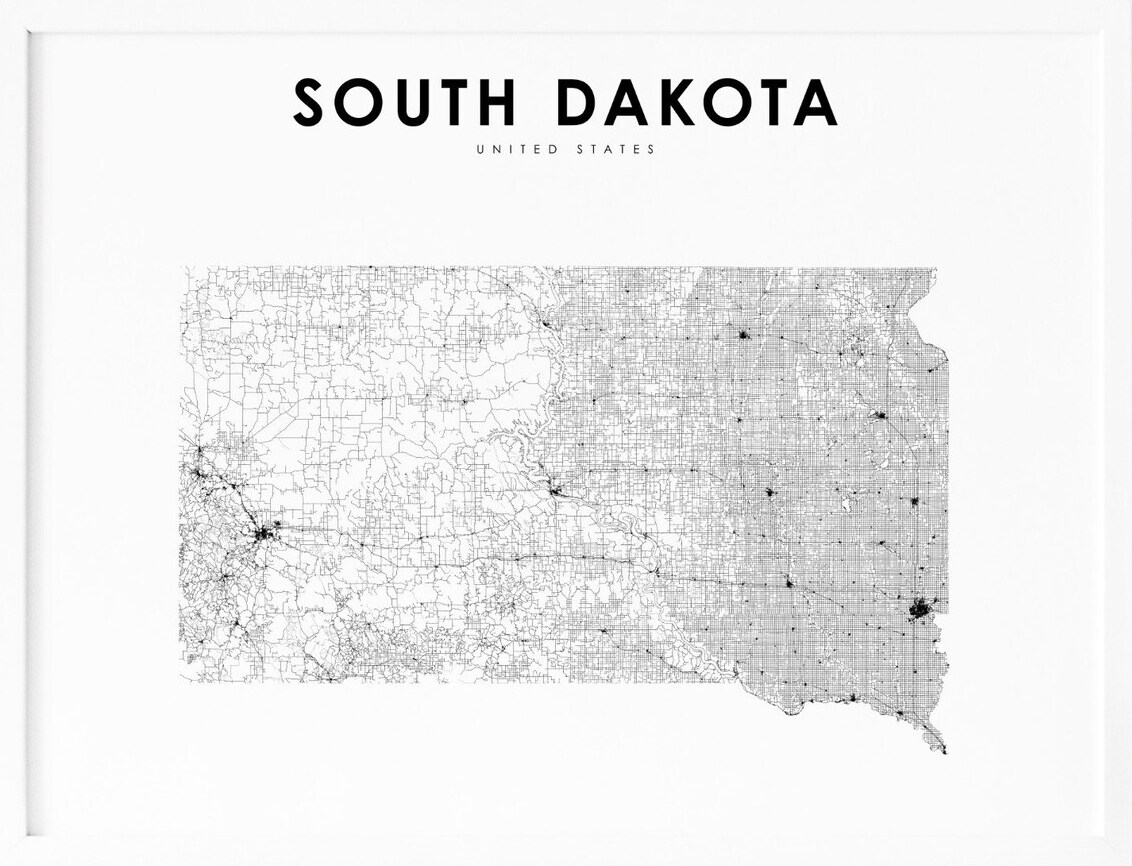
Cities
Sioux Falls

Sioux Falls is the most populous city in South Dakota and the 121st-most populous city in the United States. As of 2022, the estimated population of Sioux Falls was 202,078, making it the largest city in the state.
The city serves as the county seat of Minnehaha County, and it also extends into Lincoln County to the south, which continues up to the Iowa state line. The Sioux Falls metro area accounts for more than 30% of the state’s population. Chartered in 1856 on the banks of the Big Sioux River, the city is situated in the rolling hills at the junction of interstates 29 and 90.
Sioux Falls is a major economic hub for the region, with a diverse economy that includes healthcare, financial services, and manufacturing. The city is also known for its parks and outdoor recreation opportunities, including Falls Park, which features the beautiful waterfalls of the Big Sioux River.
Rapid City

Rapid City is the second most populous city in South Dakota after Sioux Falls and the county seat of Pennington County. The city is named after Rapid Creek, where the settlement developed, and is located in western South Dakota, on the eastern slope of the Black Hills. As of the 2020 Census, the population was 74,703.
Known as the “Gateway to the Black Hills” and the “City of Presidents” because of the life-size bronze president statues downtown, Rapid City is split by a low mountain ridge that divides the city’s western and eastern parts. The city is also home to Ellsworth Air Force Base on its outskirts, and Camp Rapid, part of the South Dakota Army National Guard, is in the city’s western part. Rapid City is a popular tourist destination, with attractions such as Art Alley, Dinosaur Park, the City of Presidents walking tour, Chapel in the Hills, Storybook Island, and Main Street Square.
The historic “Old West” town of Deadwood is nearby, and in the neighboring Black Hills are the tourist attractions of Mount Rushmore, the Crazy Horse Memorial, Custer State Park, Wind Cave National Park, Jewel Cave National Monument, and the museum at the Black Hills Institute of Geological Research. To the city’s east is Badlands National Park.
Aberdeen
Aberdeen is a city in and the county seat of Brown County, South Dakota, located approximately 125 miles (201 km) northeast of Pierre. The city has a population of 28,495 as of the 2020 census, making it the third most populous city in the state after Sioux Falls and Rapid City. Aberdeen is home to Northern State University, which offers a range of undergraduate and graduate programs.
The city has a diversified economy, with major industries including healthcare, manufacturing, and retail. Aberdeen is also home to several cultural attractions, including the Aberdeen Community Theatre, which hosts a variety of plays and musicals throughout the year.
The city hosts several annual events, including the Brown County Fair and the Northern State University Gypsy Days celebration. Aberdeen is a great place to live, work, and play, with a strong sense of community and a high quality of life.
Brookings
Brookings is a city in Brookings County, South Dakota, and is the state’s fourth most populous city, with a population of 23,377 as of the 2020 census. The city is the county seat of Brookings County and is home to South Dakota State University, the state’s largest institution of higher education. The university offers a wide range of undergraduate and graduate programs, including agriculture, engineering, and nursing.
Brookings is also home to several cultural attractions, including the South Dakota Art Museum and the Children’s Museum of South Dakota. The city hosts several annual events, including the Brookings Summer Arts Festival, which showcases a variety of visual and performing arts.
Brookings is also a hub for manufacturing and agriculture, with several manufacturing companies and agricultural operations headquartered in the city. With its strong economy, excellent schools, and vibrant community, Brookings is a marvelous place to live and work.
Watertown
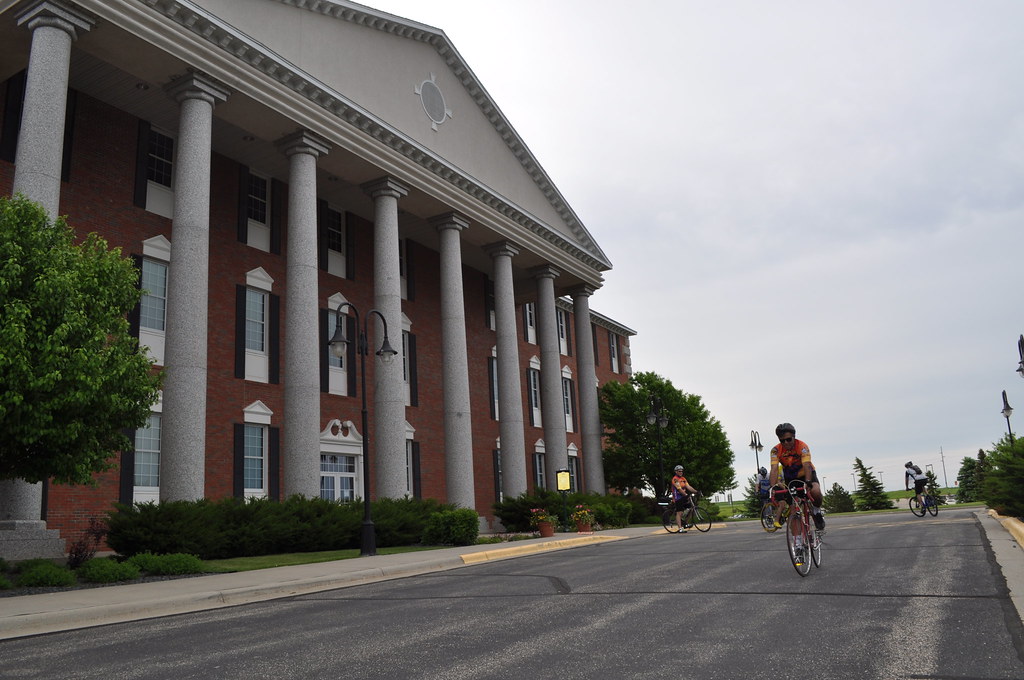
Watertown is a city in and the county seat of Codington County, South Dakota, and is home to the Redlin Art Center which houses many of the original artworks produced by Terry Redlin, one of America’s most popular wildlife artists. Watertown is located between Pelican Lake and Lake Kampeska, from which Redlin derived inspiration for his artwork.
The city has a population of 22,655 as of the 2020 census, making it the fifth most populous city in South Dakota. Watertown is also the principal city of the Watertown Micropolitan Statistical Area, which includes all of Codington and Hamlin counties. The city is home to the Bramble Park Zoo, which features a variety of animals from around the world.
Watertown’s residential real estate is considered the most expensive in South Dakota for cities of its size, with the median price for a home in Watertown being approximately $200,000. With its beautiful lakes, cultural attractions, and strong economy, Watertown is a wonderful local destination.
Mitchell

Mitchell is a city in and the county seat of Davison County, South Dakota, with a population of 15,660 as of the 2020 census, making it the sixth most populous city in the state. The city is also the principal city of the Mitchell Micropolitan Statistical Area, which includes all of Davison and Hanson counties.
Mitchell is known for its famous Corn Palace, a unique building decorated with corn murals that draws thousands of visitors each year. The city is also home to several other cultural attractions, including the Dakota Discovery Museum, which showcases the history and culture of the region.
Mitchell’s economy is diverse, with major industries including healthcare, manufacturing, and agriculture. The city is also home to several parks and recreational areas, including Lake Mitchell, which offers opportunities for fishing, boating, and swimming. With its robust economy, excellent schools, and welcoming community, Mitchell is an exciting place to visit.
Yankton
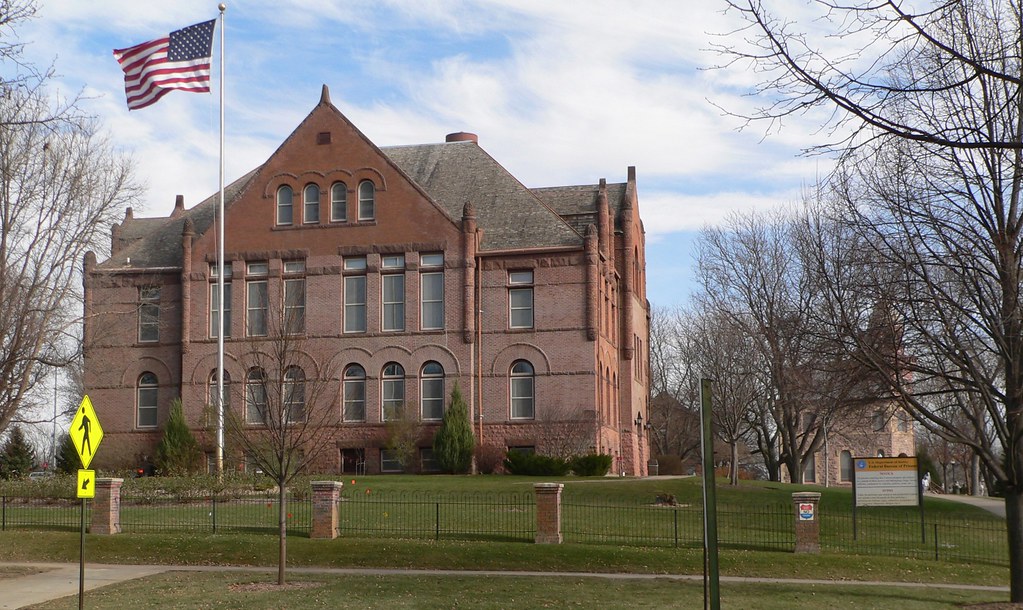
Yankton is a city in and the county seat of Yankton County, South Dakota, with a population of 15,411 as of the 2020 census, making it the seventh most populous city in the state. The city is also the principal city of the Yankton Micropolitan Statistical Area, which includes the entirety of Yankton County, and had an estimated population of 23,297 as of July 1, 2021.
Yankton is located on the Missouri River just downstream of the Gavins Point Dam and Lewis and Clark Lake, and just upstream of the confluence with the James River. The city is commonly referred to as the “River City” due to its proximity to the Missouri River and the importance the river played in the city’s settlement and development. Yankton is also known as the “Mother City of the Dakotas” because of the early important role it played in the creation and development of the Dakota Territory, which later became the 39th and 40th U.S. states of North and South Dakota.
The city is also home to the United States National Park Service’s headquarters for the Missouri National Recreational River and the historic Human Services Center, which was established as a psychiatric hospital in 1882 and is now on the National Register of Historic Places. With its rich history and beautiful location, Yankton is waiting for you with open arms.
Huron
Huron is a city in Beadle County, South Dakota, and is the county seat of Beadle County. The city has a population of 14,263 as of the 2020 census, making it the eighth most populous city in the state. The first settlement at Huron was made in 1880.
Huron is known for being the location of the South Dakota State Fair, which is held annually in late August and early September. The city is also home to a unique attraction called the World’s Largest Pheasant, a statue that stands 28 feet tall and 40 feet long. The statue is a tribute to the state’s rich hunting heritage and draws visitors from all over the world.
Huron’s economy is varied, with major industries including healthcare, manufacturing, and agriculture. With its great sense of community and brilliant attractions, Huron is a fulfilling place to live, work, and visit.
Pierre

Pierre is the capital city of the U.S. state of South Dakota and the seat of Hughes County. The city has a population of 14,091 as of the 2020 census, making it the second least populous state capital in the United States after Montpelier, Vermont. Founded in 1880, Pierre was selected as the state capital when the territory was admitted as a state.
The city is also the principal city of the Pierre Micropolitan Statistical Area, which includes all of Hughes and Stanley counties. Pierre is a center of government and commerce in South Dakota, with a diversified economy that includes agriculture, healthcare, and manufacturing.
The city is also home to several cultural attractions, including the South Dakota Cultural Heritage Center, which showcases the history and culture of the region. With its stunning location on the Missouri River and its strong community spirit, Pierre is a satisfying place to settle.
Spearfish
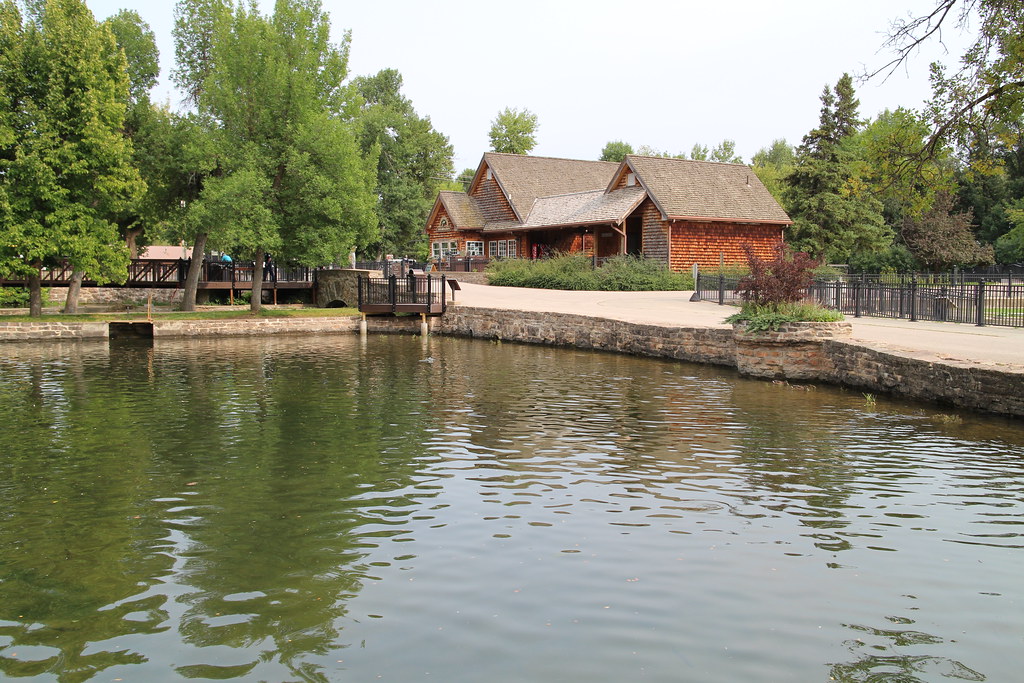
Spearfish is a city in Lawrence County, South Dakota, with a population of 12,193 as of the 2020 census, making it the 10th most populous city in the state. The city is known for its beautiful location in the Black Hills, with stunning views of the surrounding mountains and forests.
Spearfish is also home to several cultural attractions, including the Matthews Opera House and Arts Center, which hosts a variety of plays, concerts, and art exhibits throughout the year. The city has a strong economy, with major industries including healthcare, education, and tourism.
Spearfish is also home to Black Hills State University, which offers a range of undergraduate and graduate programs. With its breathtaking natural beauty and welcoming locals, Spearfish is an exciting destination for all tastes.
Box Elder
Box Elder is a city located in both Pennington and Meade counties in the State of South Dakota. The city has a population of 11,746 as of the 2020 census, making it the 11th most populous city in the state. Box Elder is known for its proximity to Ellsworth Air Force Base, which lies on the northeast side of the city.
The city was named after nearby Boxelder Creek. Box Elder is a growing community with a prosperous economy that includes healthcare, education, and manufacturing. The city is also home to several cultural attractions, including the Box Elder Museum, which showcases the history and culture of the region.
Box Elder is also notable for being referenced in the song “Box Elder” by indie rock band Pavement, which appears on their second album. With an exciting community spirit and growing economy, Box Elder is a marvelous place to live, work, and visit.
Vermillion

Vermillion is a city and the county seat of Clay County, South Dakota. The city has a population of 11,695 as of the 2020 census, making it the 12th most populous city in the state. The city is located in the southeastern corner of South Dakota, atop a bluff near the Missouri River.
Vermillion has a rich heritage, with Native American tribes calling the area home for centuries and French fur traders visiting in the late 18th century. The city was founded in 1859 and incorporated in 1873, and its name refers to the Lakota name for the area, wa sa wak pa’la, meaning “red stream.”
Vermillion is home to the University of South Dakota, a major academic institution for the state, with its only law and medical schools and its only AACSB-accredited business school. The city has a mixed academic and rural character, with major farm products including corn, soybeans, and alfalfa. With its pleasing location and rich history, Vermillion is a fulfilling place to study, live, or visit.
Brandon
Brandon is a city in Minnehaha County, South Dakota, located just five miles east of Sioux Falls. The city has a population of 11,048 as of the 2020 census, making it a growing and vibrant community. Brandon is known for its excellent schools, with the Brandon Valley School District consistently ranking among the top school districts in the state.
The city also has a strong economy, with major industries including healthcare, manufacturing, and agriculture. Brandon is home to several parks and recreational areas, including McHardy Park, which offers a variety of outdoor activities such as hiking, biking, and picnicking. With its close proximity to Sioux Falls and its friendly community, Brandon is a wonderful area to live, work, and raise a family.
Harrisburg
Harrisburg is a city in Lincoln County, South Dakota, and is a suburb of Sioux Falls. The city has a population of 6,732 as of the 2020 census, making it a small but growing community. Harrisburg is known for its excellent schools, with the Harrisburg School District consistently ranking among the top school districts in the state.
The city has a robust economy, with major industries including healthcare, education, and manufacturing. Harrisburg is also home to several parks and recreational areas, including the Harrisburg Days Park, which hosts a variety of events and activities throughout the year. With its close proximity to Sioux Falls and its strong sense of community, Harrisburg is a great place to raise a family.
Rapid Valley
Rapid Valley is a census-designated place (CDP) and unincorporated community located in Pennington County, South Dakota, and is a suburb of Rapid City. The population was 8,098 as of the 2020 census, making it a small but growing community. Rapid Valley is known for its low crime, cheap land, and stunning views of the Black Hills, making it a popular retreat for people living in Rapid City.
The community is home to many industrial and financial businesses and is the headquarters for many corporations specializing in transport and engineering. Rapid Valley is also home to several parks and recreational areas, including the Rapid Valley Community Park, which offers a range of outdoor pursuits such as hiking, biking, and picnicking.
Sturgis

Sturgis is a city located in Meade County, South Dakota, with a population of 7,020 as of the 2020 census. The city is named after Samuel D. Sturgis, a Union general during the Civil War, and is the county seat of Meade County. Sturgis is notable for being the location of one of the largest annual motorcycle events in the world: the Sturgis Motorcycle Rally, which lasts for 10 days beginning on the first Friday of August.
The rally attracts large numbers of motorcycle enthusiasts from around the world, who come to enjoy the scenic routes and participate in various events and activities. Sturgis is also known for hosting WCW’s Hog Wild/Road Wild events from 1996 to 1999.
Despite its reputation as a motorcycle destination, Sturgis is also a welcoming place to live and work, with a strong economy that includes healthcare, manufacturing, and agriculture. Sturgis delights visitors and residents with its beautiful location in the Black Hills and its amazing cultural attractions.
Tea
Tea is a city located in Lincoln County, South Dakota, and is a suburb of Sioux Falls. The city has a population of 5,598 as of the 2020 census, making it a small but growing community. Tea was laid out in 1894 and the name “Tea” was selected for its brevity.
The city is known for its excellent schools, with the Tea Area School District consistently ranking among the top school districts in the state. The city also has a strong economy, with major industries including healthcare, education, and manufacturing.
Tea is home to several parks and recreational areas, including the Tea Athletic Complex, which offers a variety of outdoor activities such as baseball, softball, and soccer. With its close proximity to Sioux Falls and its strong sense of community, Tea is a great place to live, work, and raise a family.
Madison
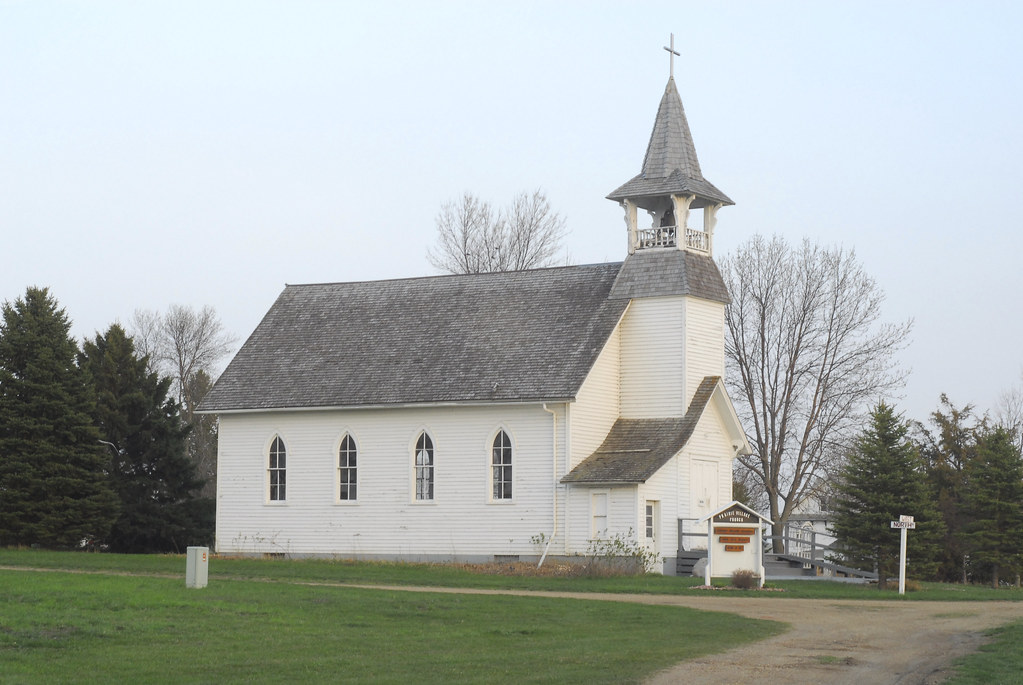
Madison is a city located in Lake County, South Dakota, with a population of 6,191 as of the 2020 census. The city is the county seat of Lake County and is home to Dakota State University. Madison is known for its excellent schools, with the Madison Central School District consistently ranking among the top school districts in the state.
The city also has a strong economy, with major industries including healthcare, education, and manufacturing. Madison is home to several parks and recreational areas, including the Prairie Village, which offers a glimpse into the region’s fascinating history with its collection of historic buildings and exhibits.
Belle Fourche
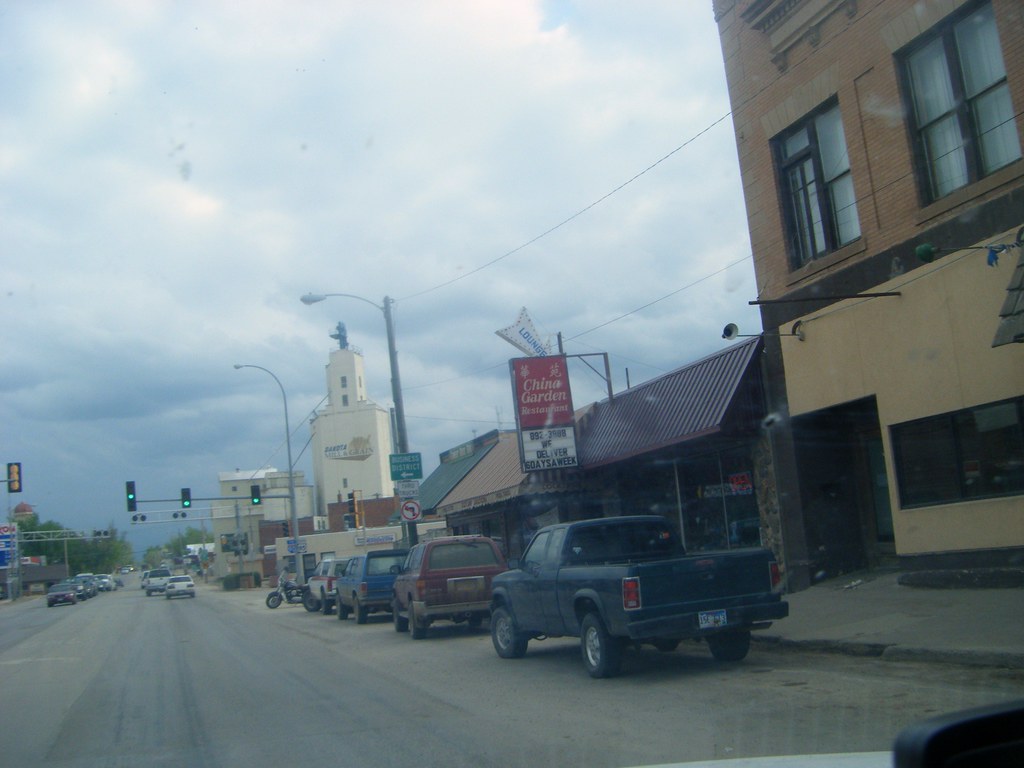
Belle Fourche is a city located in and the county seat of Butte County, South Dakota, with a population of 5,617 as of the 2020 census. The city is near the geographic center of the United States, which moved some 550 miles northwest from the geographic center of the contiguous United States in Lebanon, Kansas with the admission of Alaska and Hawaii in the mid-20th century.
Belle Fourche is known for its rich history, with the city being an important hub for the early cattle industry in the region. The city is home to several museums and cultural attractions, including the Tri-State Museum and Center of the Nation Monument, which celebrates the history and culture of the region.
Belle Fourche also has a vigorous economy, with major industries including agriculture, healthcare, and manufacturing. With its beautiful location in the Black Hills and its exciting cultural attractions, Belle Fourche is a great place for residents and tourists alike.
Dell Rapids
Dell Rapids is a city located in Minnehaha County, South Dakota, with a population of 3,996 as of the 2020 census. The city is known as “The Little City with the Big Attractions,” and for good reason. Dell Rapids is home to several distinctive cultural attractions, including the Dell Rapids Museum, which showcases the history and culture of the region, and the Dell Rapids Quarry, which offers a variety of outdoor activities such as swimming, fishing, and hiking.
The city took its name from the Dells of the Wisconsin River, which were likened to the local rapids on the Big Sioux River. Dell Rapids also has a bustling economy, with major industries including healthcare, education, and manufacturing. With its exciting sense of community and pleasing attractions, Dell Rapids is a satisfying place to live and work.
Dakota Dunes
Dakota Dunes is an unincorporated community and census-designated place (CDP) located in Union County, South Dakota, covering about 2,000 acres of master-planned residential and commercial development. The community has a population of 4,020 as of the 2020 census, making it a small but growing area.
Dakota Dunes is known for its beautiful location along the Missouri River and its stunning views of the surrounding landscape. The community is home to several parks and recreational areas, including the Dakota Dunes Country Club, which offers a variety of outdoor activities such as golf and tennis.
Dakota Dunes is also home to several major corporations, including Tyson Foods and Bechtel, making it an important economic hub in the region. With its energetic community spirit and growing economy, Dakota Dunes is a brilliant local destination.
Hot Springs
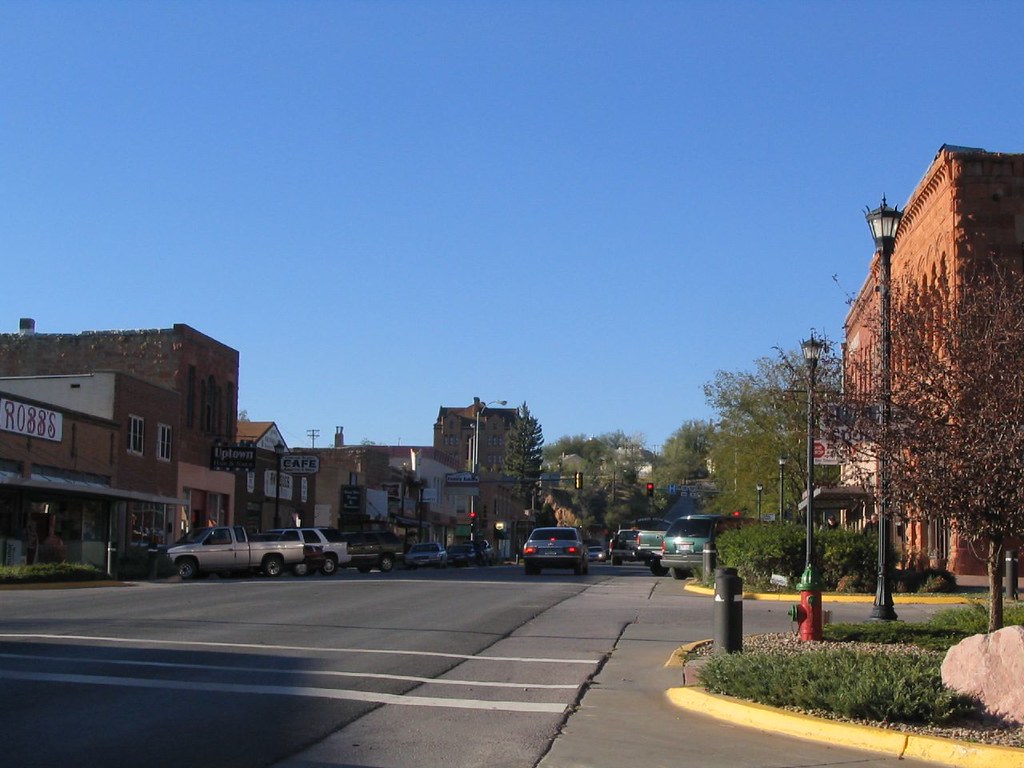
Hot Springs is a city located in and the county seat of Fall River County, South Dakota, with a population of 3,395 as of the 2020 census. The city is known for its natural hot springs, which have been used for their healing properties by Native American tribes for centuries. The Lakota name for the area is “mni kȟáta,” which means “hot water.”
Hot Springs is home to several historic sites and cultural attractions, including the Mammoth Site, a world-renowned paleontological dig site that features the remains of mammoths and other prehistoric animals. The city also has a robust economy, with major industries including tourism, healthcare, and manufacturing.
In addition, neighboring Oglala Lakota County contracts the duties of Auditor, Treasurer, and Register of Deeds to the Fall River County authority in Hot Springs. With its unique natural attractions and welcoming locals, Hot Springs is a marvelous area to visit and call home.
Milbank
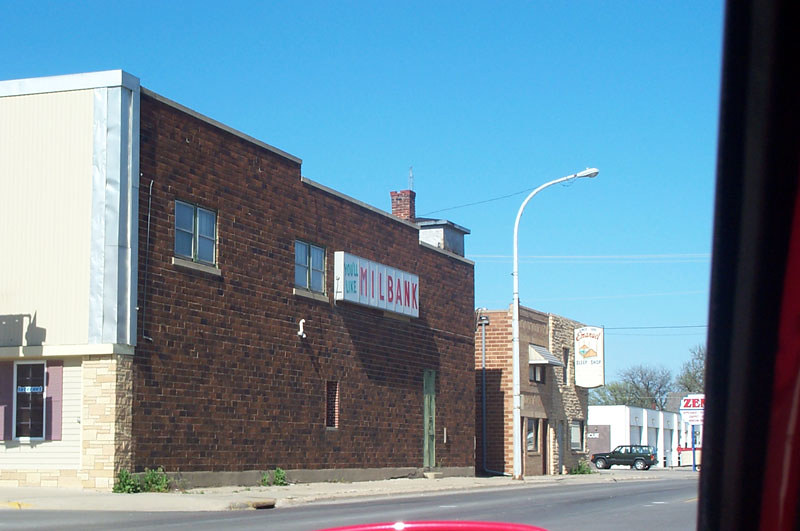
Milbank is a city located in Grant County, South Dakota, situated along the South Fork of the Whetstone River, with a population of 3,544 as of the 2020 census. The city is the county seat of Grant County and is known for its strong sense of community and rich heritage.
Milbank is the birthplace of American Legion Baseball, a program created in 1925 that is now enjoyed by high school-aged youth on more than 5,000 teams in all fifty states. The city is also home to several historic sites and cultural attractions, including the Grant County Courthouse, which was built in 1909 and is listed on the National Register of Historic Places.
Milbank has a strong economy, with major industries including healthcare, education, and manufacturing. With its stunning location along the river and its distinctive cultural attractions, Milbank is a brilliant local destination.
Interstates
Interstate 29
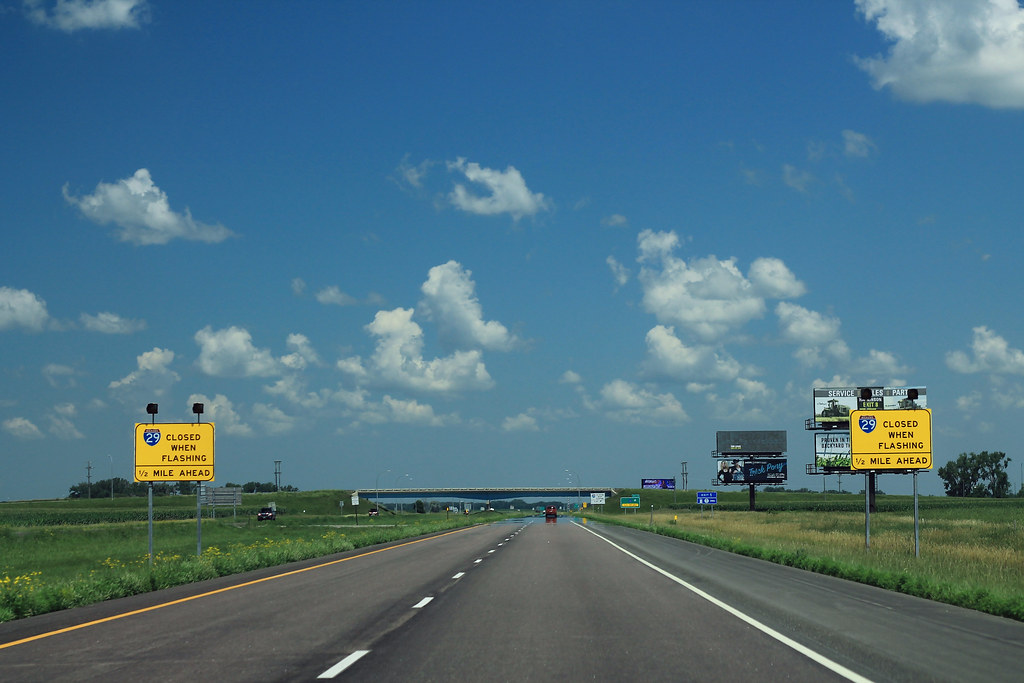
Interstate 29 (I-29) is a north-south interstate highway that traverses the midwestern United States. In South Dakota, I-29 runs along the eastern side of the state from the Iowa border near Sioux City to the North Dakota border near New Effington.
The highway passes through western portions of Sioux Falls, the state’s largest city, and travels 252.5 miles (406.4 km) in the state, the longest stretch of any of the four states through which it passes. I-229, the highway’s lone auxiliary route in South Dakota, serves as a bypass around southern and eastern Sioux Falls, providing motorists with an alternative route to avoid traffic congestion in the city.
Interstate 90

Interstate 90 (I-90) enters South Dakota in Lawrence County as a four-lane divided highway, sharing a concurrency with US Highway 14 (US 14) and passing through the town of Spearfish. The highway then passes through several towns and cities, including Sturgis and Rapid City, where it has its westernmost auxiliary route, I-190.
From Rapid City, the route heads east, passing by scenic attractions such as Custer State Park and the Needles Highway. It then passes through Jackson and Jones counties, with short concurrencies with SD 73 and SD 63.
The highway crosses the Missouri River at Lake Francis Case and continues through several more counties before reaching Sioux Falls, where it intersects with I-29. The speed limit on I-90 in South Dakota is 80 mph between Rapid City and the Minnesota state line, except for a segment between I-229 and Marion Road in Sioux Falls where it is 65 mph.
Highways
Route 12
Route 12, also known as US 12, enters South Dakota from North Dakota as a rural two-lane highway about 10 miles west/northwest of Lemmon. It then runs parallel to the border of North Dakota for approximately the next 70 miles, sometimes within less than a mile. At Walker, US 12 heads southeast for 37 miles, where it crosses the Missouri River at Mobridge, exiting the Standing Rock Indian Reservation.
From there, it continues east for 18 miles until it meets with US 83 near Selby. After leaving US 83, it turns due east and spends about 80 miles as a rural two-lane highway again. A few miles before reaching Aberdeen, it becomes an at-grade expressway.
After the junction with US 281, it goes back to being two lanes for a few miles through Aberdeen and past Aberdeen Regional Airport, before once again becoming a four-lane expressway, until two miles before Waubay. East of Waubay, it becomes again an at-grade expressway until it meets with I-29 near Summit. The South Dakota section of US 12 is legally defined by South Dakota Codified Laws § 31 April 132.
Route 14
Route 14, also known as US 14, passes through several towns and cities in South Dakota, including Brookings, Arlington, De Smet, Huron, Wolsey, Miller, Highmore, Pierre, Midland, Philip, and Wall before connecting to I-90. The highway then follows I-90 to Rapid City, Sturgis, and Spearfish before entering Wyoming.
Additionally, US 14A winds through the northern part of the scenic Black Hills, taking travelers from Sturgis to Spearfish. The Laura Ingalls Wilder Historic Highway incorporates US 14 from De Smet in the west to Rochester, Minnesota, in the east. US 14 and US 83 serve Pierre, which is one of only four state capitals not on the Interstate Highway System.
Route 16
Route 16, also known as US 16, is a 69-mile-long east-west United States Numbered Highway in the western part of South Dakota. The highway extends from the Wyoming state line near Newcastle, Wyoming, to Interstate 90 (I-90) in Rapid City. US 16 is a major route for travelers visiting Yellowstone National Park in Wyoming, as it connects the park to Rapid City.
The highway passes through several towns and cities, including Custer, where it intersects with US 385, and Hill City, which is home to the Black Hills Central Railroad. US 16 also passes through Keystone, a popular tourist destination that is located near Mount Rushmore National Memorial. Whether you’re visiting South Dakota for its natural beauty or its historic landmarks, US 16 is a great way to explore the western part of the state.
Route 18
Route 18, also known as US 18, enters South Dakota west of Edgemont and passes through several towns and cities, including Hot Springs, the Pine Ridge Indian Reservation, the Rosebud Indian Reservation, Winner, and Gregory before crossing the Missouri River near Pickstown over Fort Randall Dam.
East of the Missouri River, US 18 passes through (or near) Lake Andes and Tripp before a brief concurrency with I-29 near Worthing. East of I-29, US 18 passes through Canton before crossing the Big Sioux River into Iowa. The Oyate Trail is one of the names given to the section of US 18 traveling across South Dakota from I-29 east of Vermillion to Maverick Junction.
This trail passes through or near the Yankton Sioux, Rosebud, and Pine Ridge Indian reservations, crossing the James River Valley, the Missouri River near Fort Randall Dam, portions of Pine Ridge, and the High Plains of South Dakota.
The road has several names, including the Grant Highway, Black Hills Sioux Trail, Omaha, Rosebud and Black Hills Highway, Custer Battlefield Trail, and others. Towns along the road include Gregory, Winner, Olivet, Mission, Martin, Batesland, and Pine Ridge, with nearby towns and locales of interest including Rosebud and Wounded Knee.
Route 81
Route 81, also known as US 81, enters South Dakota by crossing the Missouri River via the Discovery Bridge at Yankton. The highway then passes near Madison before joining with I-29 at Watertown. The two highways remain concurrent through the rest of the state, leaving South Dakota near New Effington.
US 81’s junction with I-90 is located south of Salem. The South Dakota section of US 81, with the exception of a concurrency with US 14, is defined at South Dakota Codified Laws § 31-4-179. Whether you’re traveling through South Dakota for business or pleasure, US 81 provides a convenient route to explore the state’s many attractions, including Mount Rushmore, Badlands National Park, and the Black Hills.
Route 83

Route 83, also known as US 83, enters South Dakota south of Olsonville, passing through the Rosebud Indian Reservation. After a brief overlap with US 18 in Mission, the highway turns north and meets I-90 at Murdo. The two routes overlap as US 83 goes east with I-90 until Vivian, where US 83 turns north.
At Fort Pierre, US 83 meets US 14 and South Dakota Highway 34. The three highways overlap as they cross the Missouri River and enter Pierre. At Pierre, SD 34 separates, and US 83 turns northeast with US 14. They separate near Blunt, and US 83 turns northward. The highway briefly overlaps with US 212 near Gettysburg and with US 12 through the Selby area before leaving South Dakota north of Herreid.
The South Dakota section of US 83, with the exception of concurrencies with US 18, I-90, US 14, US 212, and US 12, is defined at South Dakota Codified Laws § 31-4-180. Whether you’re driving through South Dakota for business or pleasure, US 83 offers a scenic route to explore the state’s many attractions, including the Badlands, Black Hills, and Missouri River.
Route 85
Route 85, also known as US 85, enters South Dakota from Wyoming and travels northeast until it meets US 14 Alternate east at Cheyenne Crossing. The two routes form a concurrency, passing by Terry Peak, before separating in Lead. US 85 then serves as the northern terminus of US 385 before running together with US 14 through Deadwood.
The two routes split again, and US 85 runs north to meet I-90, overlapping with the interstate for 8 miles while heading west. At exit 10 on the north side of Spearfish, US 85 heads back north, crossing state highway 34 and US 212 in Belle Fourche. From there, it continues to North Dakota, passing through the small towns of Redig, Buffalo (where it meets state highway 20), and Ludlow, as well as coming to the Geographic Center of the United States.
The South Dakota section of US 85, with the exception of two concurrencies with US 14 Alternate and a concurrency with I-90, is defined at South Dakota Codified Laws § 31-4-181. Whether you’re traveling through South Dakota for its natural beauty or its historic landmarks, US 85 offers a scenic route to explore the state’s many attractions.
Route 183
Route 183, also known as US 183, enters South Dakota just south of Wewela and goes north to Colome, where it intersects with US 18. The two routes pass concurrently northwest through Winner before US 183 turns north, west of Winner. The highway goes north to Presho, where it intersects with Interstate 90 and ends.
The South Dakota section of US 183, with the exception of a concurrency with US 18, is defined at South Dakota Codified Laws § 31-4-202. While driving along US 183, you’ll have the opportunity to explore the charming towns of Colome and Winner, as well as the scenic beauty of the surrounding countryside. And if you’re looking to travel further afield, the highway’s intersection with I-90 makes it easy to explore other parts of South Dakota and beyond.
Route 212

Route 212, also known as US 212, enters South Dakota near the junction of the Montana, Wyoming, and South Dakota state lines and continues southeast to Belle Fourche, where it intersects with US 85. From there, it continues eastward, skirting the southern end of the Belle Fourche Reservoir before passing through the town of Nisland and connecting with South Dakota Highway 79 (SD 79) south of Newell.
US 212 runs north into Newell, then turns generally east again, passing through the town of Faith and entering the Cheyenne River Indian Reservation. The highway then passes through Dupree and North Eagle Butte before finally crossing the Missouri River. Continuing east, it intersects with (and is briefly co-signed with) US 83 near Gettysburg before passing through Seneca, Faulkton, and Clark, and entering Watertown.
Just east of Watertown, it intersects with I-29 and continues east to the Minnesota state line. The South Dakota section of US 212 is defined by South Dakota Codified Laws § 31-4-206. Whether you’re driving through South Dakota for business or pleasure, US 212 offers a scenic route to explore the state’s many attractions, including the Black Hills, Cheyenne River Indian Reservation, and Watertown’s historic downtown.
Route 281
Route 281, also known as US 281, enters South Dakota in Gregory County and is cosigned with US 18 just north of the South Dakota-Nebraska border. It crosses the Missouri River at Fort Randall Dam and continues north, briefly cosigning with South Dakota Highway 44 near Armour. US 281 and I-90 intersect at Plankinton, and on both sides of Wolsey, US 14 is cosigned with US 281 for a stretch of seven miles.
The highway becomes an expressway at South Dakota Highway 20, continuing through Aberdeen to a point near Westport. South Dakota Highway 10 is cosigned with US 281 for three miles near Barnard. It exits the state north of Frederick. US 281 was recently realigned in the city of Aberdeen, with a bypass built on the west side of the city, and the US 281 designation moved onto that new roadway.
The South Dakota section of US 281, with the exception of concurrencies with US 18 and US 14, is defined at South Dakota Codified Laws § 31-4-229. Whether you’re driving through South Dakota for work or leisure, US 281 offers a scenic route to explore the state’s many attractions, including the Missouri River, Fort Randall Dam, and the bustling city of Aberdeen.
Route 385
Route 385, also known as US 385, enters South Dakota south of Oelrichs and is overlapped with US Route 18 between Oelrichs and Hot Springs. US 385 turns north and enters Wind Cave National Park before turning west to go through Pringle.
At Custer, it begins an overlap with US Route 16, which ends near Hill City. US 385 gradually turns in a northwesterly direction and ends at an intersection with US Route 85 at Deadwood. The South Dakota section of US 385, with the exception of concurrencies with US 16 and US 18 and a gap at Wind Cave National Park, is defined at South Dakota Codified Laws § 31-4-235.
Whether you’re driving through South Dakota for its natural beauty or its historic landmarks, US 385 offers a scenic route to experience the state’s many attractions, including Wind Cave National Park, Custer State Park, and the historic town of Deadwood.

